Thysanoteuthidae
Thysanoteuthis rhombus
The diamondback squid
Richard E. Young and Michael VecchioneIntroduction
T. rhombus is a large, muscular squid (ca. 100 cm ML max.) found throughout tropical and subtropical regions of the world's oceans. It occupies near-surface waters during the night and midwaters during the day. It has rather short arms and large triangular fins that extend the full length of the mantle. It is fished commercially in the Sea of Japan and off Okinawa.
Brief diagnosis:
An oegopsid ...
- with "lazy T"-shaped groove of funnel locking-apparatus.
- with very muscular mantle.
Characteristics
- Arms
- Arm suckers in two series.
- Buccal crown connectives attach to ventral margins of arms IV.
- Tentacles
- Tentacular clubs with four series of suckers. (More information on the tentacular clubs is found here.)
- Tentacular clubs with four series of suckers. (More information on the tentacular clubs is found here.)
- Head
- Beaks: Descriptions can be found here: Lower beak; upper beak.
- Nuchal (dorsal head-mantle) locking-apparatus with two mantle hook-like knobs
and opposing nuchal knobs and pits.
- Beaks: Descriptions can be found here: Lower beak; upper beak.
- Funnel
- Funnel locking-apparatus with grooves arranged
like sidewise ("lazy") T. - Fins
- Fin length equals mantle length.
- Fins insert on sides of mantle rather than gladius.
- Photophores
- Photophores absent.
- Photophores absent.
- Gladius
- Vanes of gladius project anteriorly.
Nomenclature
A list of all nominal genera and species in the Thysanoteuthidae can be found here. The list includes the current status and type species of all genera, and the current status, type repository and type locality of all species and all pertinent references.
Life history
T. rhombus lays sausage-shaped egg masses that float just beneath the surface of the ocean (Suzuki, et al., 1979). Eggs lie in a double strand that winds helically around a large gelatinous core. Embryos near to hatching bear large numbers of chromatophores. This is the most commonly observed egg mass of any oceanic squid.

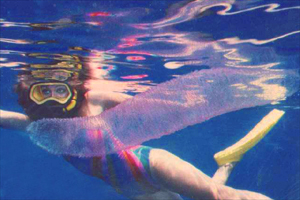
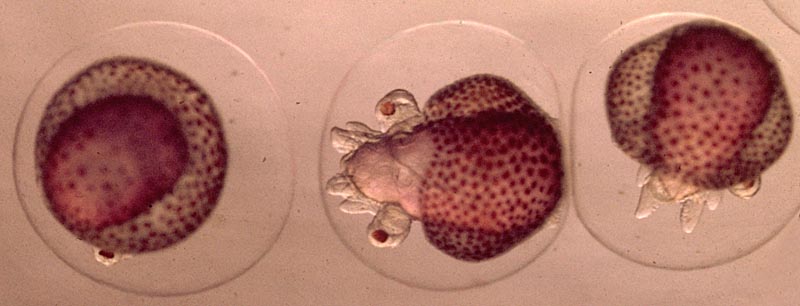
Figure. Left - T. rhombus egg mass with pink egg strands visible around the periphery of the egg mass. Photograph by Alberto Romeo with his wife, Lucia, in the background. Photograph was taken in the south Tirreno Sea within the Mediterranean Sea. Right - Advanced embryos from a T. rhombus egg mass, off Florida. Photograph by T. LaRoe. The dense arrangement of chromatophores on the mantle of the embryos provide the pink color of the left photograph.
The paralarvae of T. rhombus are distinctive. The small eyes and the numerous chromatophores (incompletely shown in the drawings below) are characteristic as are the attenuate arm tips in the larger paralarvae. In large paralarvae, the second and third arms also have long slender trabeculae which are not shown in the drawing but are apparent in the photographs below. The growth from hatchling to 15 mm ML is illustrated and discussed in detail in Wakabayashi et al. (2015).


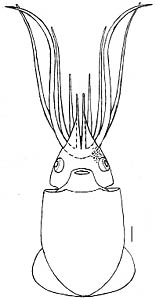
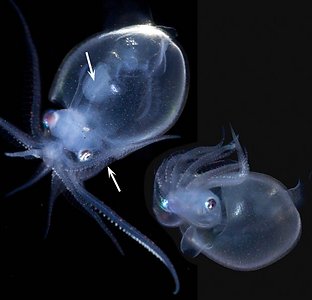
Figure. T. rhombus, Hawaiian waters. Left - Ventral view of paralaravae, Hawaiian waters, 2.3 mm ML (left), 7.5 mm ML (right). The scale bar is 1 mm. Drawings by R. Young. Right - Two views (dorsal (left) and anterolateral (right)) of a paralarva about 4 or 5 mm ML. Top arrow points to the shape and position digestive gland (important phylogenetic characters) which does not abut the head but is located well posterior. Bottom arrow points to the large trabeculate membrane of arm II. In situ photographs taken at 15 m depth during a night dive off the Kona coast of Hawaii over bottom depths of about 1500 m. © 2014 Jeffrey Milisen

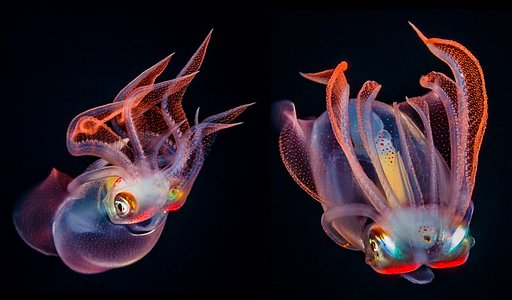
Right - Anteroventral view (left) and anterodorsal view (right) of the same juvenile,about 2-3 cm total length. In situ photographs taken during a night dive off the Kona coast of Hawaii over bottom depths of about 1000-1500 m. © 2013 Masa Ushioda, CoolWaterPhoto.com
References
Suzuki, S., H. Misaki and T. Okutani. 1979. Studies on early life history of decapodan Mollusca. VIII. A supplementary note on floating egg mass of Thysanoteuthis rhombus Troschel in Japan - The first underwater photography. Venus 38: 153-155.
Naef, A. 1921-23. Cephalopoda. Fauna e Flora de Golfo di Napoli. Monograph, no. 35, 863 pp.
Nigmatullin, C. M. and A. I. Arkhipkin. 1998. A review of the biology of the diamond back squid, Thysanoteuthis rhombus (Oegopsida: Thysanoteuthidae).p. 155-181. In: (T. Okutani, Ed.) Contributed Papers to International Symposium on Large Pelagic Squids. Japan Marine Fishery Resources Research Center, Tokyo.
Toll, R. B. 1998. The gladius in teuthoid systematics. Smithson. Contr. Zool., No. 586: 55-68.
Wakabayashi, T., Tsuchiya, K., & Segawa, S. (2005). Morphological changes with growth in the paralarvae of the diamondback squid Thysanoteuthis rhombus Troschel, 1857. Phuket Marine Biological Center Research Bulletin, 66, 167–174.
Title Illustrations

| Scientific Name | Thysanoteuthis rhombus |
|---|---|
| Location | off Philippines |
| Specimen Condition | Live Specimen |
| Life Cycle Stage | young |
| View | Dorsal |
| Copyright | © 1996 John Arnold |
| Scientific Name | Thysanoteuthis rhombus |
|---|---|
| Location | Hawaiian waters |
| Comments | M. Parry holding |
| Sex | Female |
| Life Cycle Stage | immature |
| View | Side |
| Image Use |
 This media file is licensed under the Creative Commons Attribution-NonCommercial License - Version 3.0. This media file is licensed under the Creative Commons Attribution-NonCommercial License - Version 3.0.
|
| Copyright |
© 1996

|
About This Page

University of Hawaii, Honolulu, HI, USA

National Museum of Natural History, Washington, D. C. , USA
Page copyright © 2019 and
 Page: Tree of Life
Thysanoteuthidae . Thysanoteuthis rhombus . The diamondback squid.
Authored by
Richard E. Young and Michael Vecchione.
The TEXT of this page is licensed under the
Creative Commons Attribution-NonCommercial License - Version 3.0. Note that images and other media
featured on this page are each governed by their own license, and they may or may not be available
for reuse. Click on an image or a media link to access the media data window, which provides the
relevant licensing information. For the general terms and conditions of ToL material reuse and
redistribution, please see the Tree of Life Copyright
Policies.
Page: Tree of Life
Thysanoteuthidae . Thysanoteuthis rhombus . The diamondback squid.
Authored by
Richard E. Young and Michael Vecchione.
The TEXT of this page is licensed under the
Creative Commons Attribution-NonCommercial License - Version 3.0. Note that images and other media
featured on this page are each governed by their own license, and they may or may not be available
for reuse. Click on an image or a media link to access the media data window, which provides the
relevant licensing information. For the general terms and conditions of ToL material reuse and
redistribution, please see the Tree of Life Copyright
Policies.
- Content changed 16 November 2016
Citing this page:
Young, Richard E. and Michael Vecchione. 2016. Thysanoteuthidae . Thysanoteuthis rhombus . The diamondback squid. Version 16 November 2016 (under construction). http://tolweb.org/Thysanoteuthis_rhombus/19420/2016.11.16 in The Tree of Life Web Project, http://tolweb.org/





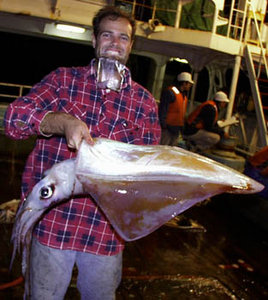
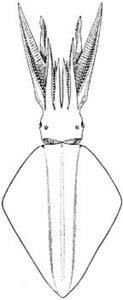
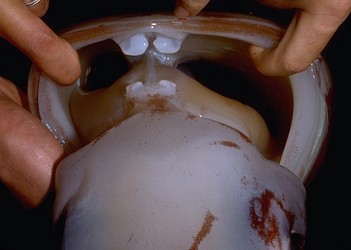
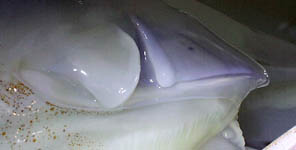






 Go to quick links
Go to quick search
Go to navigation for this section of the ToL site
Go to detailed links for the ToL site
Go to quick links
Go to quick search
Go to navigation for this section of the ToL site
Go to detailed links for the ToL site